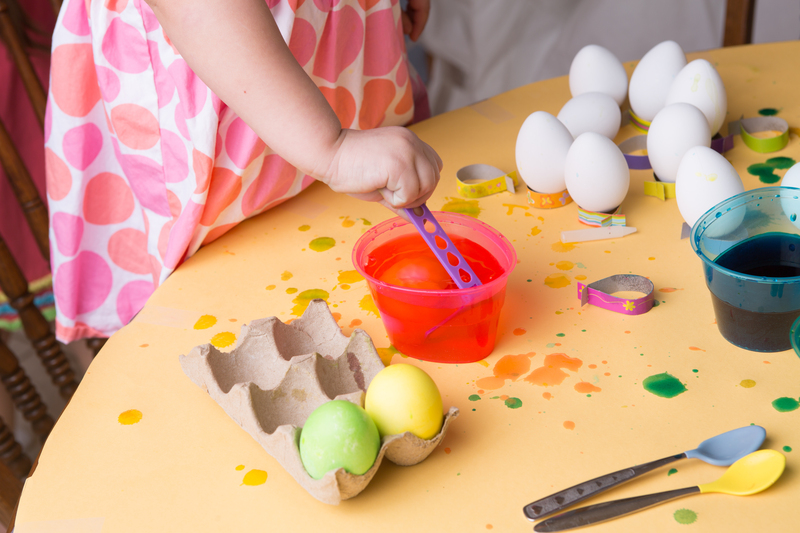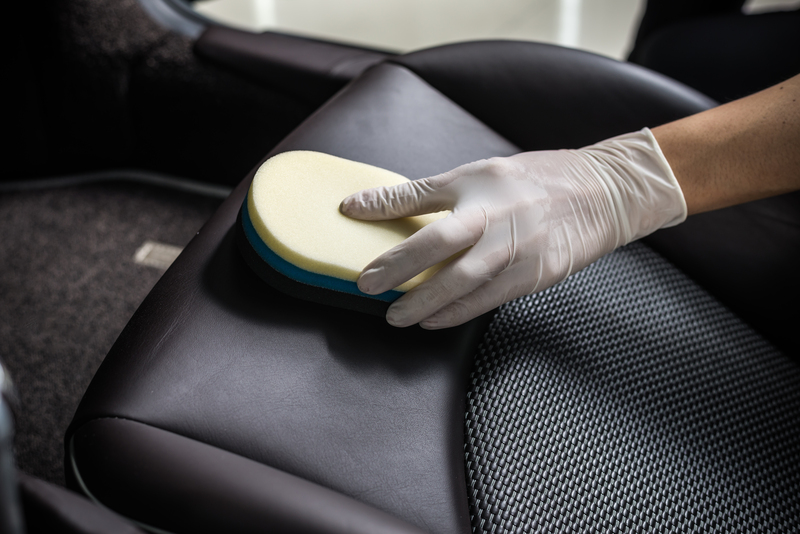Organise and Simplify a Small Wardrobe Effectively
Posted on 14/08/2025
How to Organise and Simplify a Small Wardrobe Effectively
Is your wardrobe bursting at the seams? Do you find yourself struggling to locate your favourite shirt or that elusive pair of jeans? If your closet is a constant source of stress, it's time to regain control. Learning how to organise and simplify a small wardrobe effectively can transform your closet space--and your mornings! In this comprehensive guide, you'll discover actionable steps, expert tips, and clever hacks to help you curate an organised, simplified, and functional wardrobe, no matter how limited your space may be.

Why Simplifying a Small Wardrobe Is Essential
Less is truly more, especially when it comes to managing a small space. An organised small wardrobe offers numerous benefits:
- Reduces daily stress-- You'll spend less time searching for clothes.
- Enhances outfit choices-- Everything you see can actually be worn.
- Encourages mindful shopping-- You'll start buying only what you love and wear frequently.
- Creates more physical and mental space-- A clutter-free closet brings a sense of calm.
- Makes wardrobe cleaning and maintaining effortless.
Ready to upgrade your small wardrobe organisation? Let's get started!
Step 1: Conduct a Wardrobe Audit
Clear Out Everything
Empty your entire wardrobe--yes, even those clothes buried at the back! This allows you to *truly* see what you own and creates a blank canvas for your organising efforts.
Sort and Categorise
Lay all your clothes, shoes, and accessories out in categories such as:
- Tops (t-shirts, blouses, shirts)
- Bottoms (jeans, trousers, skirts)
- Dresses and jumpsuits
- Outerwear (jackets, blazers, coats)
- Shoes
- Accessories (scarves, belts, jewellery)
Be honest with yourself. If you haven't worn an item in the last year or it doesn't fit, consider letting it go.
Step 2: Declutter with Intention
The "Keep, Donate, Discard" Method
Use three separate boxes or piles:
- Keep: Only what you love and actually wear.
- Donate: Items in good condition you no longer need.
- Discard: Damaged or worn-out clothes not suitable for donation.
Be ruthless--remind yourself that each piece you let go of opens up more space and clarity.
Consider Seasonal Storage
If you're limited on space, store out-of-season clothes in vacuum bags, storage bins, or under-bed containers. Rotate them as the seasons change to keep your wardrobe focused on what you actually need right now.
Step 3: Optimise Your Storage Space
Make the Most of Every Inch
- Double up rails: Add a second rail for shorter items like shirts or skirts to double your hanging space.
- Use slim, non-slip hangers: These take up less space and prevent clothes from slipping off.
- Add shelf dividers: Keep folded clothes, sweaters or bags neat and upright.
- Utilise over-the-door storage: Perfect for shoes, accessories, or even scarves.
- Install hooks or pegboards: Hang belts, jewellery, or hats on walls or doors.
- Invest in drawer organisers: Compartmentalise socks, intimates, and small accessories.
- Store vertically: Fold items like t-shirts and jeans horizontally in drawers so everything is visible and accessible.
Step 4: Create a Capsule Wardrobe
Building a capsule wardrobe is a powerful way to organise and simplify a small wardrobe effectively. A capsule wardrobe focuses on owning fewer garments that coordinate well together, streamlining your morning routine and ensuring every item gets worn.
Essentials of a Capsule Wardrobe
- Versatile basics: Neutral t-shirts, quality jeans, classic blouses.
- Layering pieces: Cardigans, blazers, lightweight sweaters.
- Statement pieces: Add personality with patterned tops, bold trousers, or a unique jacket.
- Shoes: Focus on pairs that are comfortable, stylish, and suitable for multiple occasions.
Choose items that suit your lifestyle, fit well, and make you feel confident.
Mix and Match
The beauty of a capsule wardrobe lies in its adaptability. Most pieces should be easy to mix, match, and layer, allowing you to create countless outfit combinations from just a few items.
Step 5: Smart Folding and Hanging Techniques
The KonMari Fold
Implement the famous KonMari folding method for clothes you keep in drawers. This approach maximises space and keeps every item visible at a glance.
Hanging Tips for Small Wardrobes
- Hang only items prone to wrinkling, such as blouses, dresses, and trousers.
- Group clothes by category and color for quick selections.
- Face hangers in the same direction for a uniform, navigable wardrobe.
Remember: Effective wardrobe organisation is not just about storage, but about easy access and visual clarity.
Step 6: Accessorise Wisely
Limit the quantity of accessories you own by selecting a few favorites that complement most outfits. Store these in designated containers or trays, and display pieces like scarves or hats to encourage frequent use. Avoid letting accessories become clutter!
- Utilise hooks, trays, or small boxes for jewellery and watches.
- Hang belts and scarves so you can see them easily.
Step 7: Maintain Your Organised Wardrobe
Adopt the One-In, One-Out Rule
Every time you add a new clothing item, remove one you no longer wear. This rule ensures your small wardrobe stays organised and simplified over time.
Schedule Regular Reviews
- Plan seasonal wardrobe audits.
- Donate or repurpose items you haven't worn in months.
- Check for damage or wear and repair as needed.
Maintenance is key--you'll never have to start from scratch again!
Bonus Tips: Expert Hacks for Small Wardrobe Organisation
- Label storage containers for quick identification, especially for rarely-used items.
- Utilise shelf risers to double storage on shelves.
- Opt for multi-use hangers that hold several items at once (like tiered trouser hangers).
- Use storage baskets for bulky items or off-season accessories.
Common Mistakes to Avoid When Organising a Small Wardrobe
- Storing everything in sight: Too much visual clutter overwhelms and hinders decision making.
- Holding onto "just in case" items: If you rarely wear it, let it go!
- Forgetting about vertical space: Walls, doors, and shelves offer extra storage potential.
- Not adjusting for lifestyle changes: Update your wardrobe as your needs evolve.
- Neglecting shoes and accessories: Poorly stored shoes create mess--use vertical solutions or stackable boxes instead.

Frequently Asked Questions: Organising a Small Closet
Q: How often should I declutter my wardrobe?
A: Ideally, review your wardrobe every 3-6 months or at the start of each new season. Regular checks keep clutter from creeping back in.
Q: What if my wardrobe is too small for all my clothes?
A: Consider rotating your clothes seasonally and utilising external storage solutions like vacuum bags or storage bins. Focus on keeping only current-season items accessible.
Q: How can I maximise space in a tiny wardrobe?
A: Use slim hangers, add additional rails or shelves, and use every bit of vertical space. Drawer organisers and hanging storage are ideal for small wardrobes.
Q: Should I invest in new closet organisers or furniture?
A: Not necessarily. Often, you can repurpose items you already have or use low-cost solutions such as baskets, clear boxes, or additional hooks. Only invest after you've decluttered--never buy organisers for things you don't really need to keep!
Conclusion: Enjoy Your Simplified, Organised Wardrobe
By following these expert-backed steps to organise and simplify your small wardrobe effectively, you'll create a closet that's not just tidy, but also stress-free, functional, and reflective of your style. Remember, maintaining simplicity is an ongoing process. Continually evaluate your wardrobe needs, adopt mindful shopping habits, and make organisation part of your routine.
Start today, and experience the calm and clarity that an organised wardrobe brings to your life--no matter how small your space may be!





